1 of 54
Download to read offline



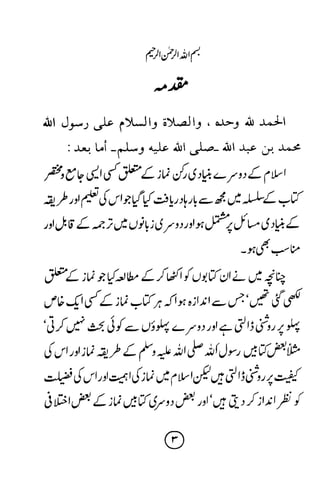
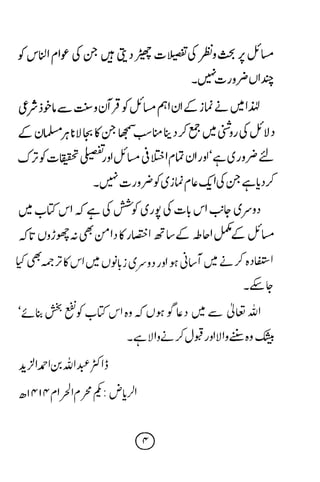
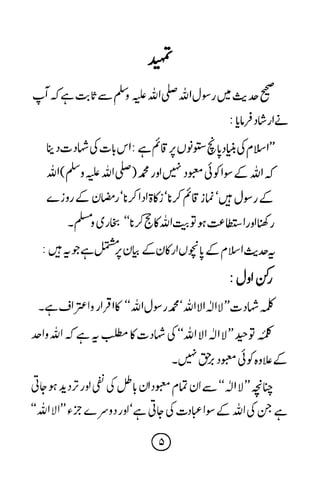
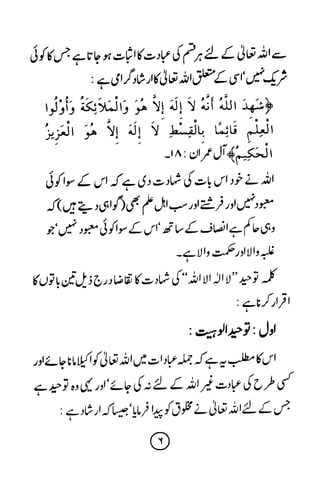
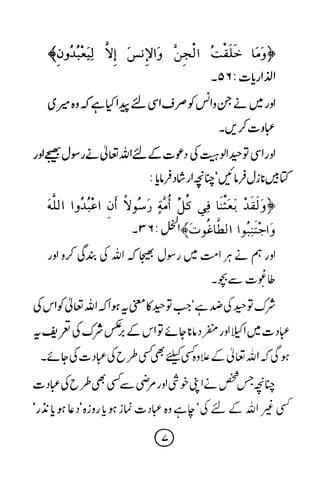
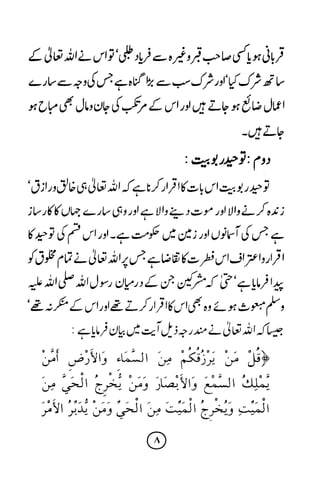



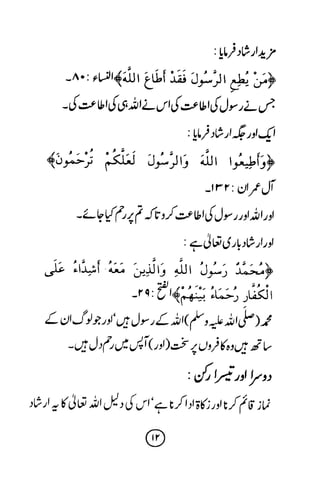
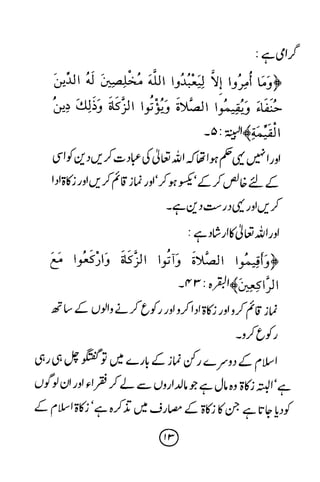
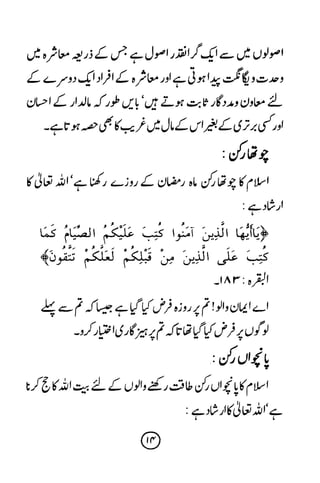

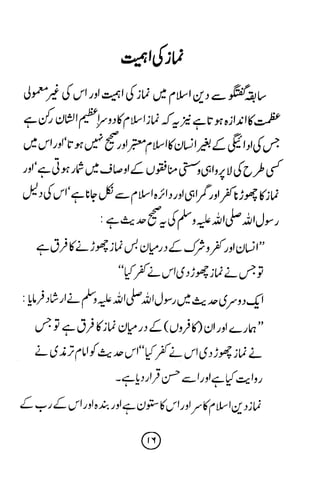
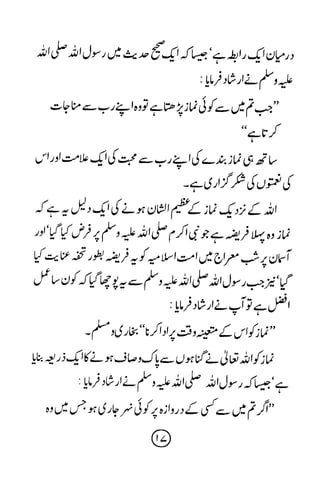
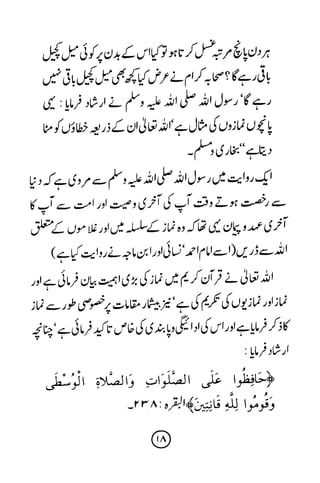

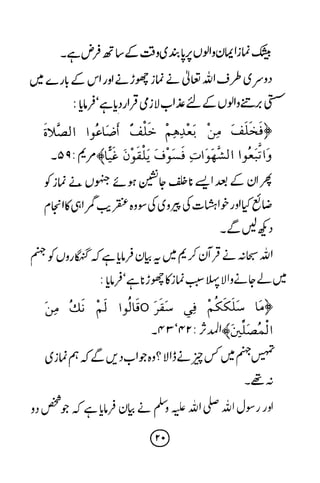
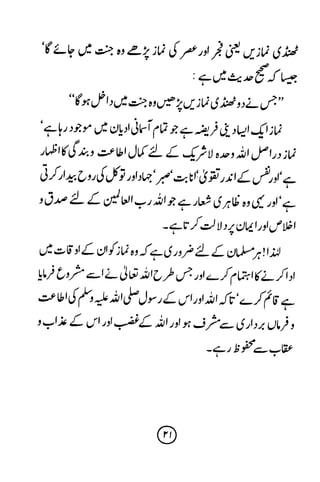
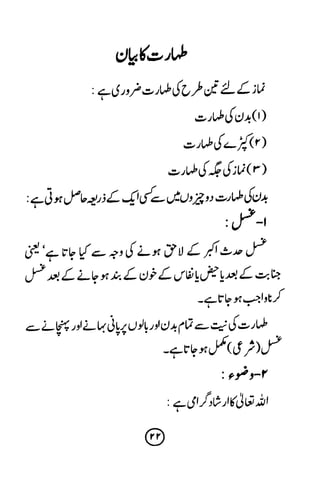

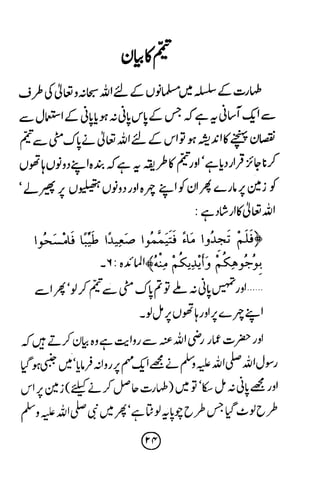

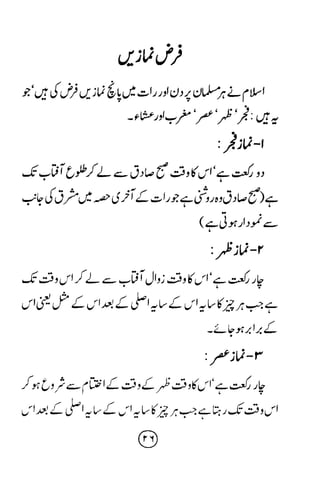
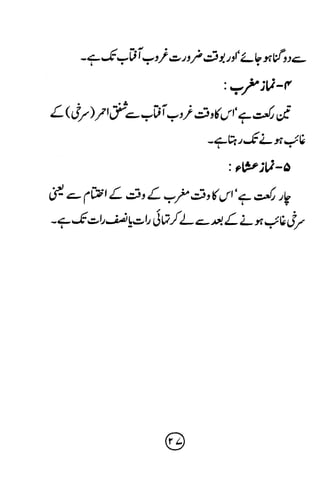
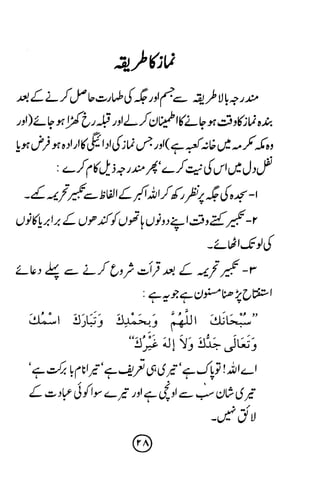
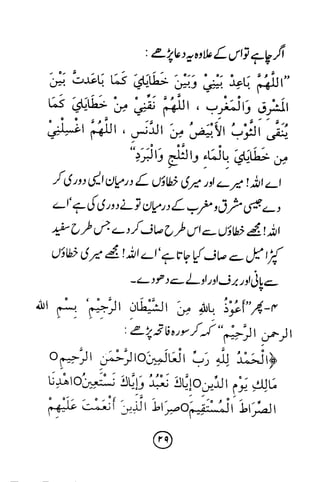
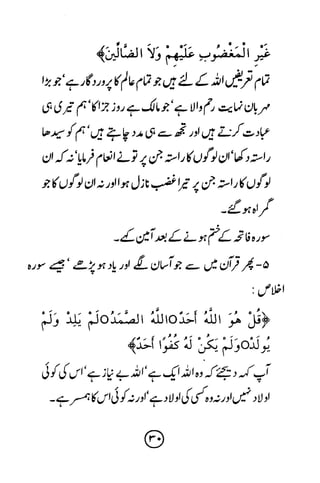
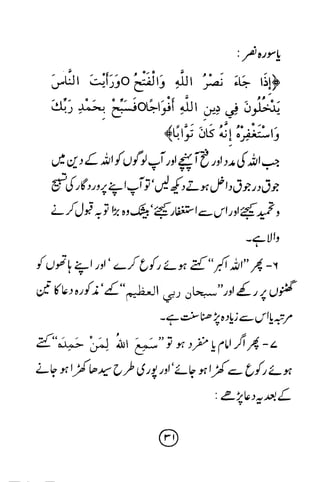

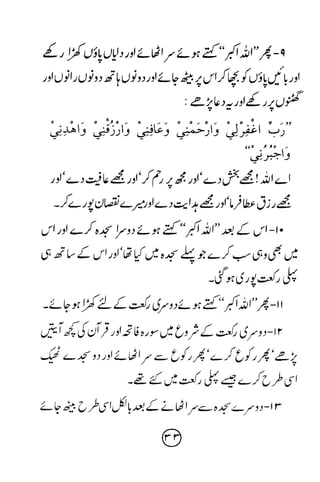

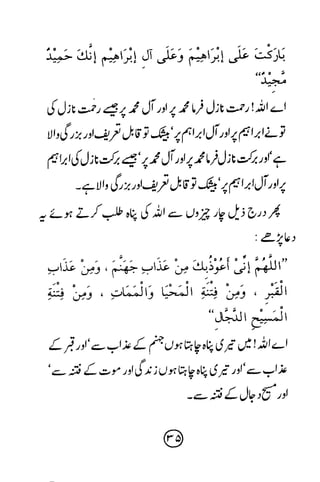
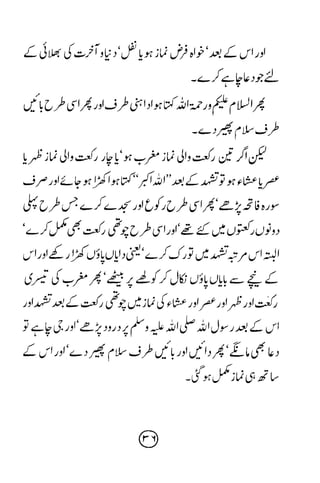
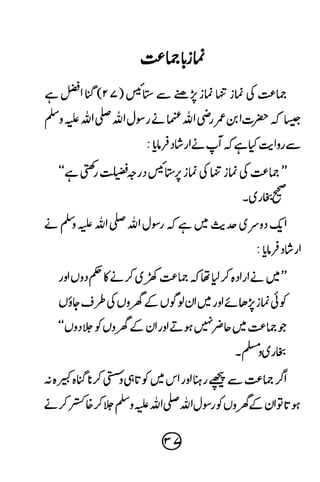

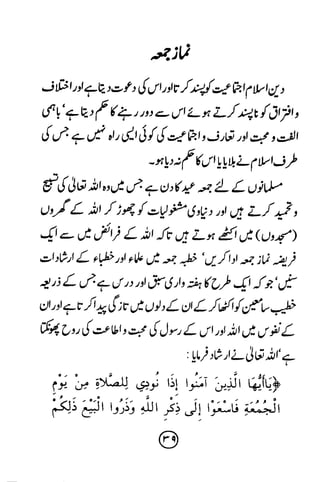
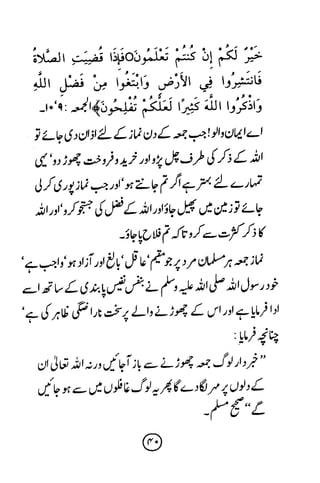
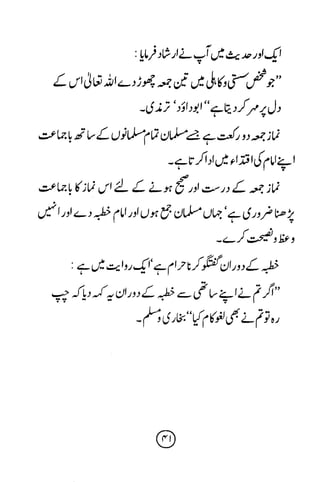
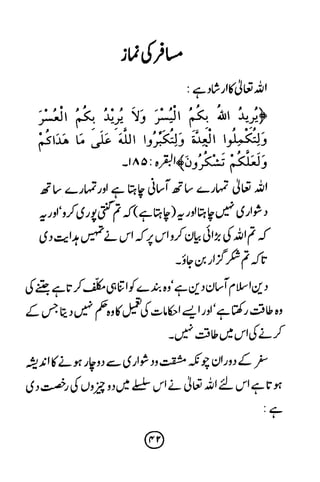

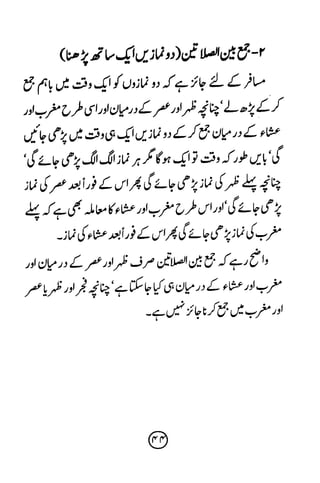
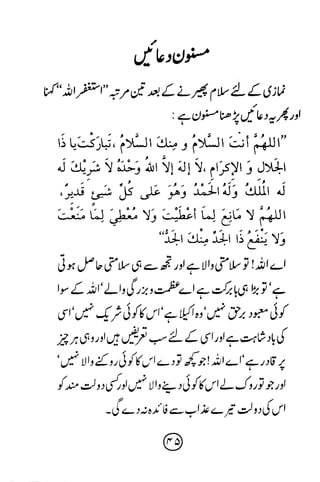
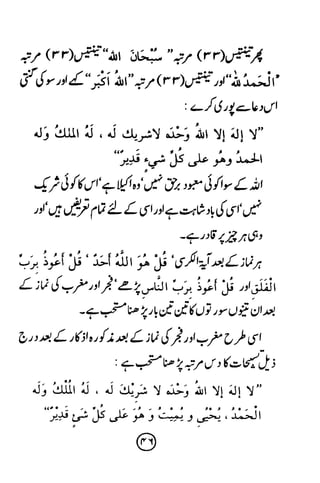
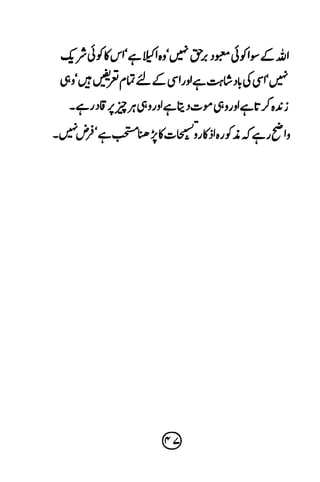
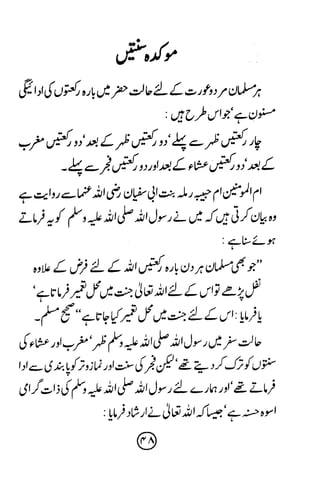
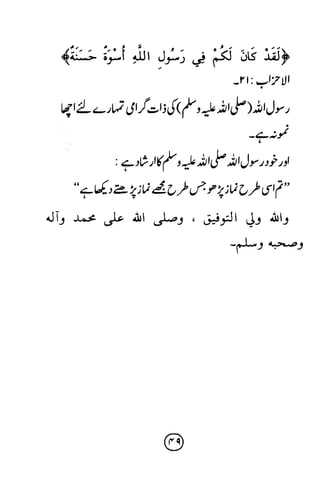

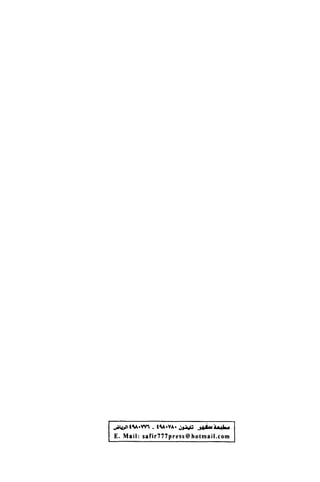
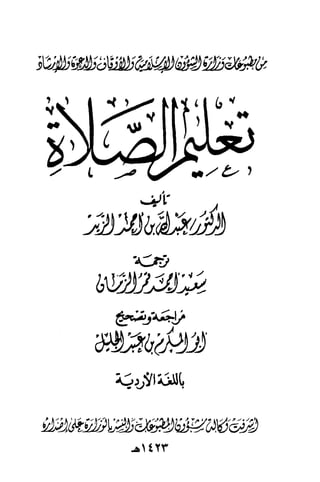
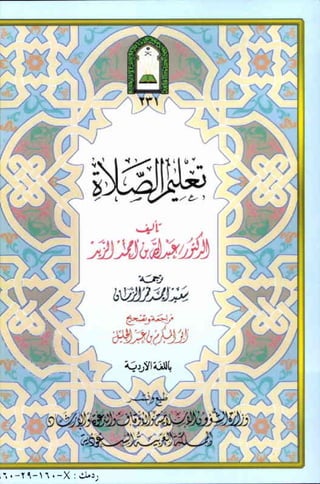
Ad
Recommended
En why were we created
En why were we createdHappiness keys
?
The document discusses the fundamental question of why humans were created. It argues that divine revelation from the Quran and hadiths, rather than human speculation, provides the correct understanding of creation. Specifically, it says that while worshipping God is the purpose of human creation, a deeper question is why God created at all. The document asserts that creation is a natural consequence of God being the Creator, and that creation manifests His attribute of being the Creator. It warns against interpretations of creation that blur the distinction between God and His creation or that claim part of God is within humans, calling these beliefs forms of shirk (polytheism) according to Islamic theology.Kn salafi manhaj
Kn salafi manhajHappiness keys
?
Ė├╬─ĄĄ░³║¼┴╦ėą╣žū┌Į╠║═ą┼č÷Ą──┌╚▌Ż¼░³└©▓╗═¼╬─╗»║═ė’čįĄ─▒Ē┤’ĘĮ╩ĮĪŻ╦³╠Į╠ų┴╦╠žČ©Ą─ū┌Į╠Į╠ęÕ║═╩Ą╝∙Ż¼▓ó╠ß╣®┴╦ŽÓ╣žĄ─ę²ė├║═ĮŌ╩═ĪŻ─┌╚▌Įß╣╣Ė┤įėŻ¼╔µ╝░ČÓĖ÷ų„╠Ō║═ĘĮŽ“ĪŻEn tenets of faith
En tenets of faithHappiness keys
?
Allah is the one true God, the creator and sustainer of all things. He alone deserves to be worshipped. He has beautiful names and perfect attributes. He has power over all things in heaven and earth. Allah speaks when He wills and His knowledge encompasses all things.En brief illustrated_guide
En brief illustrated_guideHappiness keys
?
This document provides an overview of a book that discusses evidence for the truth of Islam. It notes that the book contains three chapters:
1. Evidence for the truth of Islam, including scientific miracles in the Quran, challenges to produce a chapter like the Quran, biblical prophecies of Muhammad, and miracles performed by Muhammad.
2. Benefits of Islam, such as eternal paradise, salvation from hellfire, happiness, and forgiveness of sins.
3. General information on Islam, addressing questions about topics like terrorism, women's status, and the five pillars.
The introduction argues that these pieces of evidence establish the Quran as the word of God, Muhammad as a prophet,En how to become muslim
En how to become muslimHappiness keys
?
The document provides guidance on how to become a Muslim by uttering the Shahadah, or testimony of faith, in Arabic: "Ash-hadu an laa ilaaha ill-Allah, wa ashhadu anna Mu-hammadan Ī«abd-ullahi wa rasooluh." which means "I testify that there is no true god except Allah, and I testify that Muhammad is His slave and Messenger." It outlines the key conditions for the Shahadah to be accepted, including having knowledge, certainty, acceptance, compliance, truthfulness, and sincerity of worship only to Allah.Bn talimussalat
Bn talimussalatHappiness keys
?
The document appears to be a religious text written in Arabic. It discusses the five pillars of Islam which form the foundation of the Muslim faith. These pillars are the declaration of faith, prayer, alms-giving, fasting during Ramadan, and the pilgrimage to Mecca. The text emphasizes that Muhammad is the final prophet of God and obedience to him is required in the Muslim religion.En just one message
En just one messageHappiness keys
?
This document discusses the "Just One Message" that has been conveyed throughout history by prophets including Adam, Noah, Abraham, Moses, Jesus, and Muhammad. The one message is that God is One and should be worshipped alone without any partners. The document examines passages from the Bible and Quran that affirm the oneness of God. It argues that believing God is three-in-one or associating other divine beings with God contradicts the clear monotheistic message found in the holy scriptures. In conclusion, it reiterates that all major religious texts confirm there is only one God, and any supposed deities besides the one God are false beliefs.En islam final message
En islam final messageHappiness keys
?
This document provides a summary of the key beliefs and principles of Islam according to Saleh As-Saleh. It discusses Islam as the final and complete message from God to mankind, perfected by God and requiring no additions or deletions. It outlines Islam's purpose, beliefs regarding God's oneness and attributes, righteous deeds, interactions, lawful/unlawful matters, migration, jihad, and avoiding deviations. It advises following the Quran and teachings of Muhammad and his companions to understand Islam correctly and calls people to Islam by establishing evidence for God's oneness and linking life/death to the afterlife.En life of abdu wahhaab
En life of abdu wahhaabHappiness keys
?
Muhammad ibn Abdul-Wahhaab was a scholar from Najd, located in central Arabia. The introduction provides context on Najd's history from the time of the Prophet Muhammad until ibn Abdul-Wahhaab. It emphasizes the need to study ibn Abdul-Wahhaab and his teachings impartially based on reliable sources, with fairness, objectivity and scholarly integrity. The document seeks to present an accurate account of ibn Abdul-Wahhaab's life and message through verified Muslim and non-Muslim sources.En prophet muhammad presents his brother jesus to mankind
En prophet muhammad presents his brother jesus to mankindHappiness keys
?
This document discusses the unity of basic principles of prophethood across religions. It provides evidence from Quranic verses that prophets were sent throughout history with consistent messages about God, refinement of the human being, and establishment of an ethical society. The Quran affirms revelation was given to previous prophets like Moses and Jesus, and one prophet authenticates the prophethood of those before him. This confirms the concept of revelation and prophethood in Islam builds upon established beliefs of the People of the Book.En islam in brief
En islam in briefHappiness keys
?
This document provides an introduction to some key Islamic concepts:
1) It defines Allah as the one and only God in Islam, describing Allah's unique attributes according to verses in the Quran.
2) It discusses proofs of Allah's existence, including the evidence of creation, design, and guidance in the natural world.
3) It explains the Islamic concept of Tawheed (unity of God), arguing that believing in multiple gods would lead to disorder in the universe.En womens rights a historical perspective
En womens rights a historical perspectiveHappiness keys
?
This document provides an overview of women's rights from a historical perspective, with a focus on comparing the status of women in major religions and contemporary societies. It discusses how women have been mistreated in many cultures throughout history, manipulated by men while the mistreatment was blamed on religious teachings. The document aims to objectively analyze how Islamic teachings actually promoted women's rights centuries before other societies by restoring dignity and rights.En why people accept islam
En why people accept islamHappiness keys
?
This document discusses reasons why people accept Islam in different regions and eras. It identifies 5 main reasons based on examples from the time of the Prophet Muhammad: 1) The role model of close companions; 2) Responding to the message of Islamic monotheism; 3) Seeking religious truth; 4) Reading the Quran; 5) Marriage to Muslims. Modern surveys in various countries find these same top reasons still apply. The document concludes follow-up is needed to support new converts and their families to prevent leaving the faith.En who is the creator
En who is the creatorHappiness keys
?
The document discusses who or what can be considered the creator. It argues that matter cannot be eternal or the creator for several reasons: 1) Eternity implies everlastingness and self-sufficiency, attributes that matter does not have; 2) Modern science tells us about the nature of matter; 3) The attributes of being all-knowing, all-powerful, etc. that are implied by eternity cannot apply to matter. It then discusses why the creator must be the God of Islam, noting that Islam claims other religions have been distorted over time but the Quran has been preserved. Finally, it provides arguments for why the creator cannot have children.En what is the sunnah
En what is the sunnahHappiness keys
?
The Sunnah refers to everything related from the Prophet Muhammad regarding his statements, actions, tacit approvals, personality, physical description, or biography. It is considered a form of divine revelation from God alongside the Quran. The Sunnah explains and provides details for laws found in the Quran, as well as examples of applying these laws. It held the status of revelation during the Prophet's lifetime and is the second source of Islamic law after the Quran.En what is a miracle
En what is a miracleHappiness keys
?
1) A miracle is defined as an extraordinary act or event contrary to the laws of nature that can only occur through direct intervention from God. Miracles serve to prove the truthfulness and credibility of prophets.
2) Miracles differ from magic, which involves tricks or illusions, and karamahs, which are extraordinary events for righteous believers but not prophets.
3) God granted different miracles to prophets that were relevant and understandable to the people of their time, such as Moses' staff swallowing magicians' tricks and Jesus curing illnesses. The Quran itself is considered the greatest miracle for Muslims.En the pleasures of paradise in brief
En the pleasures of paradise in briefHappiness keys
?
The document summarizes the pleasures of Paradise according to Islamic teachings. It describes Paradise as a place with gardens, rivers, and pleasures beyond human comprehension where believers will live happily and healthily forever. The lowest rank in Paradise will have 10 times the wealth of this world and whatever else they desire. A small space in Paradise would be better than everything in this world. Believers who do good deeds will be admitted to Paradise with its eternal pleasures.En the choice islam and christianity2
En the choice islam and christianity2Happiness keys
?
The document discusses the history of chocolate, describing how it originated from cacao beans grown by the Olmecs and Mayans in Mexico and Central America. It then explains how Spanish conquistadors introduced chocolate to Europe in the 16th century, where it became a popular drink among the elite. The document also notes that chocolate eventually became widely consumed in the form of chocolate bars and candies.En the choice islam and christianity1
En the choice islam and christianity1Happiness keys
?
The document discusses the history of chocolate production and consumption. It details how chocolate originated from cacao beans grown in Central and South America by the Maya and Aztec civilizations. The Spanish introduced chocolate to Europe in the 16th century, where it became a popular drink among the elite. By the 19th century, chocolate had evolved into solid candy bars and was mass produced and marketed around the world.En the book of prayer
En the book of prayerHappiness keys
?
This document provides information about Islamic prayer (salaat) in Islam. It discusses various topics related to prayer including wudu (ablution), ghusl (full body wash), menstruation, tayammum (dry ablution), the timings and types of obligatory prayers, how to perform prayers, things that invalidate prayers, congregational prayers, and other voluntary prayers. The document is intended to serve as a comprehensive guide to the different aspects and rulings pertaining to salaat in Islam.En prohibition of beating women
En prohibition of beating womenHappiness keys
?
The document discusses whether Islam allows or forbids beating women. It notes that Islam takes its laws from the Quran and teachings of Prophet Muhammad. While one hadith suggests Muhammad initially allowed beating, he later clarified to never beat women after many complained of abuse. The Prophet is described as having the best character and never harming women or children. Therefore, the document concludes that based on Islamic sources, beating women is forbidden in Islam.En islam the perfectly complete religion
En islam the perfectly complete religionHappiness keys
?
Ė├╬─ĄĄ╠ų┬█┴╦ėą╣ž▓╗═¼║“čĪ╚╦╝░Ųõ▒│Š░Ą─╣žŽĄą┼ŽóŻ¼▓ó╔µ╝░ėļ┼®ęĄ║═╦«ū╩į┤╣▄└ĒŽÓ╣žĄ─ų„╠ŌĪŻ╬─ĄĄųą╗╣╠ߥĮ┴╦ę╗ą®ėļĘ©┬╔║═╣µČ©ŽÓ╣žĄ──┌╚▌Ż¼╠ž▒╩ŪšļČį╠žČ©╩Ą╩®╦Ą├„Ą─┐╝┬ŪĪŻš¹╠Õ╔ŽŻ¼šŌ╩Ūę╗Ę▌Čįė┌ū╩į┤Ęų┼õ║═╗ĘŠ│╣▄└ĒĄ─ŽĻŽĖ▒©ĖµĪŻMore Related Content
Viewers also liked (9)
Bn talimussalat
Bn talimussalatHappiness keys
?
The document appears to be a religious text written in Arabic. It discusses the five pillars of Islam which form the foundation of the Muslim faith. These pillars are the declaration of faith, prayer, alms-giving, fasting during Ramadan, and the pilgrimage to Mecca. The text emphasizes that Muhammad is the final prophet of God and obedience to him is required in the Muslim religion.En just one message
En just one messageHappiness keys
?
This document discusses the "Just One Message" that has been conveyed throughout history by prophets including Adam, Noah, Abraham, Moses, Jesus, and Muhammad. The one message is that God is One and should be worshipped alone without any partners. The document examines passages from the Bible and Quran that affirm the oneness of God. It argues that believing God is three-in-one or associating other divine beings with God contradicts the clear monotheistic message found in the holy scriptures. In conclusion, it reiterates that all major religious texts confirm there is only one God, and any supposed deities besides the one God are false beliefs.En islam final message
En islam final messageHappiness keys
?
This document provides a summary of the key beliefs and principles of Islam according to Saleh As-Saleh. It discusses Islam as the final and complete message from God to mankind, perfected by God and requiring no additions or deletions. It outlines Islam's purpose, beliefs regarding God's oneness and attributes, righteous deeds, interactions, lawful/unlawful matters, migration, jihad, and avoiding deviations. It advises following the Quran and teachings of Muhammad and his companions to understand Islam correctly and calls people to Islam by establishing evidence for God's oneness and linking life/death to the afterlife.En life of abdu wahhaab
En life of abdu wahhaabHappiness keys
?
Muhammad ibn Abdul-Wahhaab was a scholar from Najd, located in central Arabia. The introduction provides context on Najd's history from the time of the Prophet Muhammad until ibn Abdul-Wahhaab. It emphasizes the need to study ibn Abdul-Wahhaab and his teachings impartially based on reliable sources, with fairness, objectivity and scholarly integrity. The document seeks to present an accurate account of ibn Abdul-Wahhaab's life and message through verified Muslim and non-Muslim sources.En prophet muhammad presents his brother jesus to mankind
En prophet muhammad presents his brother jesus to mankindHappiness keys
?
This document discusses the unity of basic principles of prophethood across religions. It provides evidence from Quranic verses that prophets were sent throughout history with consistent messages about God, refinement of the human being, and establishment of an ethical society. The Quran affirms revelation was given to previous prophets like Moses and Jesus, and one prophet authenticates the prophethood of those before him. This confirms the concept of revelation and prophethood in Islam builds upon established beliefs of the People of the Book.En islam in brief
En islam in briefHappiness keys
?
This document provides an introduction to some key Islamic concepts:
1) It defines Allah as the one and only God in Islam, describing Allah's unique attributes according to verses in the Quran.
2) It discusses proofs of Allah's existence, including the evidence of creation, design, and guidance in the natural world.
3) It explains the Islamic concept of Tawheed (unity of God), arguing that believing in multiple gods would lead to disorder in the universe.More from Happiness keys (20)
En womens rights a historical perspective
En womens rights a historical perspectiveHappiness keys
?
This document provides an overview of women's rights from a historical perspective, with a focus on comparing the status of women in major religions and contemporary societies. It discusses how women have been mistreated in many cultures throughout history, manipulated by men while the mistreatment was blamed on religious teachings. The document aims to objectively analyze how Islamic teachings actually promoted women's rights centuries before other societies by restoring dignity and rights.En why people accept islam
En why people accept islamHappiness keys
?
This document discusses reasons why people accept Islam in different regions and eras. It identifies 5 main reasons based on examples from the time of the Prophet Muhammad: 1) The role model of close companions; 2) Responding to the message of Islamic monotheism; 3) Seeking religious truth; 4) Reading the Quran; 5) Marriage to Muslims. Modern surveys in various countries find these same top reasons still apply. The document concludes follow-up is needed to support new converts and their families to prevent leaving the faith.En who is the creator
En who is the creatorHappiness keys
?
The document discusses who or what can be considered the creator. It argues that matter cannot be eternal or the creator for several reasons: 1) Eternity implies everlastingness and self-sufficiency, attributes that matter does not have; 2) Modern science tells us about the nature of matter; 3) The attributes of being all-knowing, all-powerful, etc. that are implied by eternity cannot apply to matter. It then discusses why the creator must be the God of Islam, noting that Islam claims other religions have been distorted over time but the Quran has been preserved. Finally, it provides arguments for why the creator cannot have children.En what is the sunnah
En what is the sunnahHappiness keys
?
The Sunnah refers to everything related from the Prophet Muhammad regarding his statements, actions, tacit approvals, personality, physical description, or biography. It is considered a form of divine revelation from God alongside the Quran. The Sunnah explains and provides details for laws found in the Quran, as well as examples of applying these laws. It held the status of revelation during the Prophet's lifetime and is the second source of Islamic law after the Quran.En what is a miracle
En what is a miracleHappiness keys
?
1) A miracle is defined as an extraordinary act or event contrary to the laws of nature that can only occur through direct intervention from God. Miracles serve to prove the truthfulness and credibility of prophets.
2) Miracles differ from magic, which involves tricks or illusions, and karamahs, which are extraordinary events for righteous believers but not prophets.
3) God granted different miracles to prophets that were relevant and understandable to the people of their time, such as Moses' staff swallowing magicians' tricks and Jesus curing illnesses. The Quran itself is considered the greatest miracle for Muslims.En the pleasures of paradise in brief
En the pleasures of paradise in briefHappiness keys
?
The document summarizes the pleasures of Paradise according to Islamic teachings. It describes Paradise as a place with gardens, rivers, and pleasures beyond human comprehension where believers will live happily and healthily forever. The lowest rank in Paradise will have 10 times the wealth of this world and whatever else they desire. A small space in Paradise would be better than everything in this world. Believers who do good deeds will be admitted to Paradise with its eternal pleasures.En the choice islam and christianity2
En the choice islam and christianity2Happiness keys
?
The document discusses the history of chocolate, describing how it originated from cacao beans grown by the Olmecs and Mayans in Mexico and Central America. It then explains how Spanish conquistadors introduced chocolate to Europe in the 16th century, where it became a popular drink among the elite. The document also notes that chocolate eventually became widely consumed in the form of chocolate bars and candies.En the choice islam and christianity1
En the choice islam and christianity1Happiness keys
?
The document discusses the history of chocolate production and consumption. It details how chocolate originated from cacao beans grown in Central and South America by the Maya and Aztec civilizations. The Spanish introduced chocolate to Europe in the 16th century, where it became a popular drink among the elite. By the 19th century, chocolate had evolved into solid candy bars and was mass produced and marketed around the world.En the book of prayer
En the book of prayerHappiness keys
?
This document provides information about Islamic prayer (salaat) in Islam. It discusses various topics related to prayer including wudu (ablution), ghusl (full body wash), menstruation, tayammum (dry ablution), the timings and types of obligatory prayers, how to perform prayers, things that invalidate prayers, congregational prayers, and other voluntary prayers. The document is intended to serve as a comprehensive guide to the different aspects and rulings pertaining to salaat in Islam.En prohibition of beating women
En prohibition of beating womenHappiness keys
?
The document discusses whether Islam allows or forbids beating women. It notes that Islam takes its laws from the Quran and teachings of Prophet Muhammad. While one hadith suggests Muhammad initially allowed beating, he later clarified to never beat women after many complained of abuse. The Prophet is described as having the best character and never harming women or children. Therefore, the document concludes that based on Islamic sources, beating women is forbidden in Islam.En islam the perfectly complete religion
En islam the perfectly complete religionHappiness keys
?
Ė├╬─ĄĄ╠ų┬█┴╦ėą╣ž▓╗═¼║“čĪ╚╦╝░Ųõ▒│Š░Ą─╣žŽĄą┼ŽóŻ¼▓ó╔µ╝░ėļ┼®ęĄ║═╦«ū╩į┤╣▄└ĒŽÓ╣žĄ─ų„╠ŌĪŻ╬─ĄĄųą╗╣╠ߥĮ┴╦ę╗ą®ėļĘ©┬╔║═╣µČ©ŽÓ╣žĄ──┌╚▌Ż¼╠ž▒╩ŪšļČį╠žČ©╩Ą╩®╦Ą├„Ą─┐╝┬ŪĪŻš¹╠Õ╔ŽŻ¼šŌ╩Ūę╗Ę▌Čįė┌ū╩į┤Ęų┼õ║═╗ĘŠ│╣▄└ĒĄ─ŽĻŽĖ▒©ĖµĪŻEn islam its foundations and concepts
En islam its foundations and conceptsHappiness keys
?
This document provides an introduction to Islam, discussing its foundations and concepts. It begins by noting that mankind has many questions about existence that science cannot fully answer, and that guidance is needed from the true religion revealed by God. It then discusses the oneness and uniqueness of God, noting verses from the Quran that affirm God is one and unlike any other. The document invites readers to follow Islam as the straight path guided by God.En islam and christianity
En islam and christianityHappiness keys
?
The document discusses the benefits of exercise for mental health. Regular physical activity can help reduce anxiety and depression and improve mood and cognitive functioning. Exercise has also been shown to boost self-esteem and can serve as a healthy way to manage stress.En intimate issues
En intimate issuesHappiness keys
?
Islam views marriage and intimacy between spouses as important aspects of a holistic lifestyle that fulfills physical, emotional, and spiritual needs. Sex is encouraged within marriage to cement the spousal bond but prohibited before or outside of marriage. The document outlines Islamic guidelines for intimacy, including only permitting vaginal sex between married partners and prohibiting anal sex or sex during menstruation. It also discusses the importance of sex education and fulfilling each partner's needs, as well as maintaining privacy around intimate matters.En christianity the original and present reality
En christianity the original and present realityHappiness keys
?
This document summarizes the origins and present beliefs of Christianity based on analysis of Christian texts. It discusses three main points:
1) Originally, Christianity taught monotheism and that Jesus was a prophet, consistent with other prophets.
2) There is no evidence Jesus claimed to be the son of God; the term was also used for other prophets and groups.
3) The concept of the Holy Trinity, including Jesus as the second person, cannot be found in the New Testament and contradicts its statements that only God is God. The document aims to analyze Christianity based on its own texts.En can taking a life be justified
En can taking a life be justifiedHappiness keys
?
Taking a life can be justified under Islamic law in only two situations: for murder or for crimes against the community like treason that threaten social stability. The death penalty requires extremely strict evidentiary standards and can only be carried out by a Muslim ruler, not individuals. Islamic law aims to preserve individual rights while maintaining community rights and emphasizes justice, mercy, and forgiveness. Even when called for, the death penalty is meant to be carried out humanely with the promise of forgiveness.Ad
Recently uploaded (20)
Introductory Material for Markov-chain Description of Abzymes Catalysis
Introductory Material for Markov-chain Description of Abzymes CatalysisOrchidea Maria Lecian
?
speaker: Orchidea Maria Lecian
Authors: Orchidea Maria Lecian, seergey Suchkov
Title: Introductory Material for
Markov-chain Description of Abzymes Catalysis
Talk presented at the International Symposium on
Public Health and Epidemiology and
Immunology Research
12-13 June 2025, Rome, Italy on 13 June 2025.Synthesis and characterization of Thiazole derivatives of N-substituted lsatin
Synthesis and characterization of Thiazole derivatives of N-substituted lsatinProfessional Content Writing's
?
Thiazole derivatives of N-substituted isatin have attracted significant interest due to their wide-ranging applications in medicinal chemistry, pharmaceuticals, and materials science. These compounds exhibit diverse biological activities, making them promising drug candidates, while their unique chemical structures offer potential in designing advanced functional materials. This presentation focuses on the synthesis and characterization of these derivatives through targeted chemical reactions involving various substituents on the isatin and thiazole cores, enabling the fine-tuning of their biological and physical properties. Characterization techniques such as NMR, FT-IR, Mass Spectrometry, and X-ray crystallography are employed to confirm molecular structures and analyze solid-state properties. These methods provide critical insights into the structure©Cactivity relationships of the synthesized compounds. Our presentation highlights the synthetic pathways, structural elucidation, and potential applications of thiazole-based N-substituted isatin derivatives, aiming to support ongoing advancements in drug discovery and material development.
About Author:
Noor Zulfiqar is an award-winning chemist, Premium member of American Chemical Society (ACS), certified publisher & peer reviewer, and an experienced academic lecturer. As a professional content creator, she offers top-tier presentation design, research writing, and scientific content development services. Her multidisciplinary expertise spans computational science, chemistry, nanotechnology, environmental studies, socio-economics, human resource management, life sciences, engineering management, medical and pharmaceutical sciences, and business, her work ensures clarity, creativity, and academic excellence. Her services are ideal for those seeking impactful, visually compelling content tailored to diverse academic and research needs.
For collaborations or custom-designed academic content, feel free to reach out!
Contact:
Email: professionalwriter94@outlook.com
Facebook: https://www.facebook.com/share/1LgwpoyLDg/
Website: https://professional-content-writings.jimdosite.comInvestigatory_project Topic:-effect of electrolysis in solar desalination .pdf
Investigatory_project Topic:-effect of electrolysis in solar desalination .pdfshubham997ku
?
Cbse class 12. chemistry investigatory project Gas Exchange in Insects and structures 01
Gas Exchange in Insects and structures 01PhoebeAkinyi1
?
Description of structures involved in gaseous exchangeHow Psychology Can Power Product Decisions: A Human-Centered Blueprint- Shray...
How Psychology Can Power Product Decisions: A Human-Centered Blueprint- Shray...ShrayasiRoy2
?
In an era where users are bombarded with endless choices, capturing attention and driving meaningful engagement isn't just about building features Ī¬ it's about understanding what drives human behavior at its core. This presentation offers a deep dive into how psychological principles can inform smarter, more intuitive product decisions. ItĪ»s not just theory Ī¬ itĪ»s a hands-on blueprint for applying human-centered thinking at every stage of product development.
Grounded in behavioral science, consumer psychology, and cognitive design, this deck unpacks the key psychological drivers behind user motivation, decision-making, emotional engagement, and habit formation. From attention economics and dopamine-driven interactions to trust cues, loss aversion, and the paradox of choice Ī¬ you'll see how to harness what the mind naturally does to build digital products people donĪ»t just useĪŁ they return to, talk about, and even advocate for.
WeĪ»ll explore:
Cognitive biases that shape user perception and choices Ī¬ and how to use them to your advantage without crossing ethical lines.
Emotional design principles that build trust, trigger desire, and turn features into feelings.
User behavior loops that build stickiness, deepen retention, and create emotional investments.
Psychological friction Ī¬ when to reduce it for conversion, and when to add it for intentionality.
Dark patterns vs. ethical persuasion Ī¬ the thin line between influence and manipulation.
A/B testing with a psychological lens Ī¬ learning not just what works, but why it works.
This is more than UX research or product marketing fluff. ItĪ»s a call to build with empathy, backed by science, and sharpened by real-world product thinking. Whether youĪ»re shaping onboarding flows, gamifying engagement, designing pricing models, or rethinking retention strategies Ī¬ this deck will arm you with a new lens: the human mind.
Perfect for product managers, growth strategists, UX designers, behavioral scientists, and anyone serious about building products that resonate, retain, and inspire action.
Because at the heart of every great productĪŁ is a human.
LetĪ»s start building for the brain Ī¬ not just the screen.Death in Sleep Apnea: Who and How It Kills
Death in Sleep Apnea: Who and How It KillsRichard Castriotta
?
Evaluation of mortality in obstructive sleep apnea.An Analysis Of The Pearl Short Story By John Steinbeck
An Analysis Of The Pearl Short Story By John SteinbeckBillyDarmawan3
?
John Steinbeck Popular Short Story
The Pearl adalah sebuah novella yang ditulis oleh John Steinbeck yang mengisahkan perjuangan seorang nelayan miskin bernama Kino dan istrinya, Juana, yang hidup sederhana di sebuah desa kecil Meksiko. Suatu hari, Kino menemukan sebuah mutiara raksasa Ī¬ "the Pearl of the World" Ī¬ yang diyakini akan mengubah nasib mereka.
Namun, alih-alih membawa kebahagiaan, mutiara itu justru menimbulkan keserakahan, kekerasan, dan penderitaan. Masyarakat di sekitarnya mulai menunjukkan niat jahat, dan bahkan keluarga Kino sendiri terjebak dalam konflik batin antara harapan dan kehancuran. Pada akhirnya, The Pearl menjadi simbol ironi: sesuatu yang tampak sebagai berkah berubah menjadi kutukan.
Melalui cerita ini, Steinbeck mengeksplorasi tema keserakahan, harapan, kemiskinan, dan ketimpangan sosial. Dengan gaya narasi yang lugas namun penuh makna simbolik, The Pearl menjadi refleksi tajam tentang sifat manusia dan dampak tragis dari keinginan yang tak terkendali.
What is Skeleton system.pptx by rizwan bashir
What is Skeleton system.pptx by rizwan bashirbhatbashir421
?
science, any system of knowledge that is concerned with the physical world and its phenomena and that entails unbiased observations and systematic experimentation. In general, a science involves a pursuit of knowledge covering general truths or the operations of fundamental laws.
Science can be divided into different branches based on the subject of study. The physical sciences study the inorganic world and comprise the fields of astronomy, physics, chemistry, and the Earth sciences. The biological sciences such as biology and medicine study the organic world of life and its processes. Social sciences like anthropology and economics study the social and cultural aspects of human behaviour.
Science is further treated in a number of articles. For the history of Western and Eastern science, see science, history of. For the conceptualization of science and its interrelationships with culture, see science, philosophy of. For the basic aspects of the scientific approach, see physical science, principles of; and scientific method.
Model of a molecule. Atom, Biology, Molecular Structure, Science, Science and Technology. Homepage 2010 arts and entertainment, history and society
Britannica Quiz
Science Quiz
The Editors of Encyclopaedia Britannica
This article was most recently revised and updated by Encyclopaedia Britannica.
physics
Table of Contents
Introduction & Top Questions
The scope of physics
The methodology of physics
Relations between physics and other disciplines and society
References & Edit History
Related Topics
Images & Videos
Bernoulli model of gas pressureillustration of Robert Hooke's law of elasticity of materialsLaser Interferometer Space Antenna (LISA)curved space-timetemperature scalesBrownian particleElectromagnetic radiationDiffraction gratingMillikan oil-drop experiment
Robert Millikan's method for measuring the charge of an electron
For Students
Diffraction grating
physics summary
Quizzes
Michael Faraday (L) English physicist and chemist (electromagnetism) and John Frederic Daniell (R) British chemist and meteorologist who invented the Daniell cell.
Faces of Science
Italian-born physicist Dr. Enrico Fermi draws a diagram at a blackboard with mathematical equations. circa 1950.
Physics and Natural Law
Italian physicist Guglielmo Marconi at work in the wireless room of his yacht Electra, c. 1920.
All About Physics Quiz
atom. Orange and green illustration of protons and neutrons creating the nucleus of an atom.
Another Physics Quiz
Encyclopaedia Britannica thistle graphic to be used with a Mendel/Consumer quiz in place of a photograph.
How Much Do You Know About Physics?
Related Questions
Why does physics work in SI units?
Read Next
Highway Night Traffic Portland, drive, driving, car, automobile.
What's the Difference Between Speed and Velocity?
Galaxy clusters like Abell 2744 can act as a natural cosmic lens, magnifying light from more distant, background objects through gravity. Operationalising OGC Processes with Application Packages in ILIAD: A Service ...
Operationalising OGC Processes with Application Packages in ILIAD: A Service ...Marco Amaro Oliveira
?
This contribution presents the integration of the EO Application Package model into the ILIAD Digital Twin of the Ocean architecture, using the OGC API Processes DRU specification. Built on the EOEPCA framework and OGC best practices and specifications, the approach enables standardized, containerized EO applications packaged with CWL to run across a wide range of infrastructures including Kubernetes and HPC. These applications are already in use across several platforms, and in ILIAD they have been applied to models such as oil spill forecasting, aquaculture, wave energy, and ship routing.
The EDITO platform supports OGC API Processes but is currently optimized for simpler workflows using environment variables. To enhance compatibility with EO Application Packages, ILIAD introduces a Kubernetes-based ADES implementation, enabling dynamic execution and integration with EDITO's object store and metadata catalog. The experience is also informing the evolution of the OGC Best Practice, and practical solutions for bridging architectural gaps will be discussed.The Emergence of Signatures of AGI: The Physics of Learning
The Emergence of Signatures of AGI: The Physics of LearningCharles Martin
?
A talk for the Cybernetic Society
GBSN_Unit 3 - Medical and surgical Asepsis
GBSN_Unit 3 - Medical and surgical AsepsisAreesha Ahmad
?
Microbiology for Nursing students - According to New PNC course curriculum - 2025
Cloud Collaboration Market Challenges, Drivers, Trends, and Forecast by 2031
Cloud Collaboration Market Challenges, Drivers, Trends, and Forecast by 2031moresonali406
?
The report is segmented by Component (Solution, Service); Deployment (Private Cloud, Public Cloud, Hybrid Cloud); Organization Size (Large Enterprises, Small and Medium Enterprises (SMEs)); Vertical (BFSI, Consumer Goods And Retail, Education, Government and Public Sector, Healthcare and Life Sciences, Manufacturing, Media and Entertainment, Telecommunication and ITES, Others). The global analysis is further broken-down at regional level and major countries. The report offers the value in USD for the above analysis and segmentsMOLD -GENERAL CHARACTERISTICS AND CLASSIFICATION
MOLD -GENERAL CHARACTERISTICS AND CLASSIFICATIONaparnamp966
?
This is a brief note on types of organism on food with special focus on molds. This includes their general characteristics, spores; their classification, mycotoxins, and how the molds affect food. The scientific heritage No 162 (162) (2025)
The scientific heritage No 162 (162) (2025)The scientific heritage
?
The scientific heritage No 162 (162) (2025)How Psychology Can Power Product Decisions: A Human-Centered Blueprint- Shray...
How Psychology Can Power Product Decisions: A Human-Centered Blueprint- Shray...ShrayasiRoy
?
In an era where users are bombarded with endless choices, capturing attention and driving meaningful engagement isn't just about building features Ī¬ it's about understanding what drives human behavior at its core. This presentation offers a deep dive into how psychological principles can inform smarter, more intuitive product decisions. ItĪ»s not just theory Ī¬ itĪ»s a hands-on blueprint for applying human-centered thinking at every stage of product development.
Grounded in behavioral science, consumer psychology, and cognitive design, this deck unpacks the key psychological drivers behind user motivation, decision-making, emotional engagement, and habit formation. From attention economics and dopamine-driven interactions to trust cues, loss aversion, and the paradox of choice Ī¬ you'll see how to harness what the mind naturally does to build digital products people donĪ»t just useĪŁ they return to, talk about, and even advocate for.
WeĪ»ll explore:
Cognitive biases that shape user perception and choices Ī¬ and how to use them to your advantage without crossing ethical lines.
Emotional design principles that build trust, trigger desire, and turn features into feelings.
User behavior loops that build stickiness, deepen retention, and create emotional investments.
Psychological friction Ī¬ when to reduce it for conversion, and when to add it for intentionality.
Dark patterns vs. ethical persuasion Ī¬ the thin line between influence and manipulation.
A/B testing with a psychological lens Ī¬ learning not just what works, but why it works.
This is more than UX research or product marketing fluff. ItĪ»s a call to build with empathy, backed by science, and sharpened by real-world product thinking. Whether youĪ»re shaping onboarding flows, gamifying engagement, designing pricing models, or rethinking retention strategies Ī¬ this deck will arm you with a new lens: the human mind.
Perfect for product managers, growth strategists, UX designers, behavioral scientists, and anyone serious about building products that resonate, retain, and inspire action.
Because at the heart of every great productĪŁ is a human.
LetĪ»s start building for the brain Ī¬ not just the screen.Synthesis and characterization of Thiazole derivatives of N-substituted lsatin
Synthesis and characterization of Thiazole derivatives of N-substituted lsatinProfessional Content Writing's
?
Operationalising OGC Processes with Application Packages in ILIAD: A Service ...
Operationalising OGC Processes with Application Packages in ILIAD: A Service ...Marco Amaro Oliveira
?
Ad
